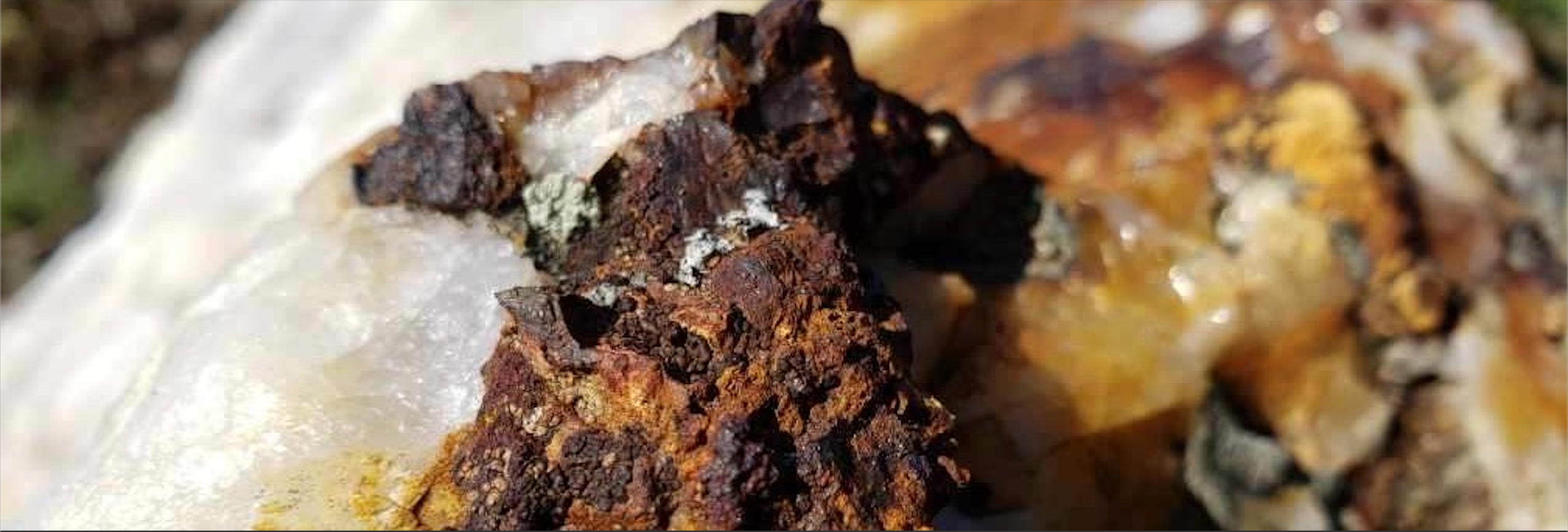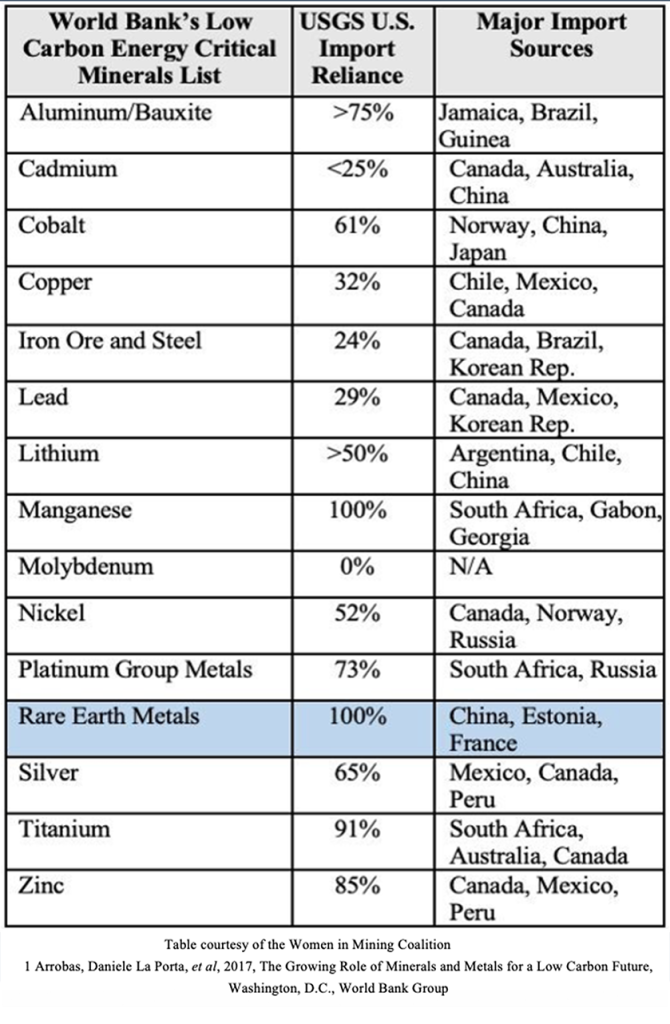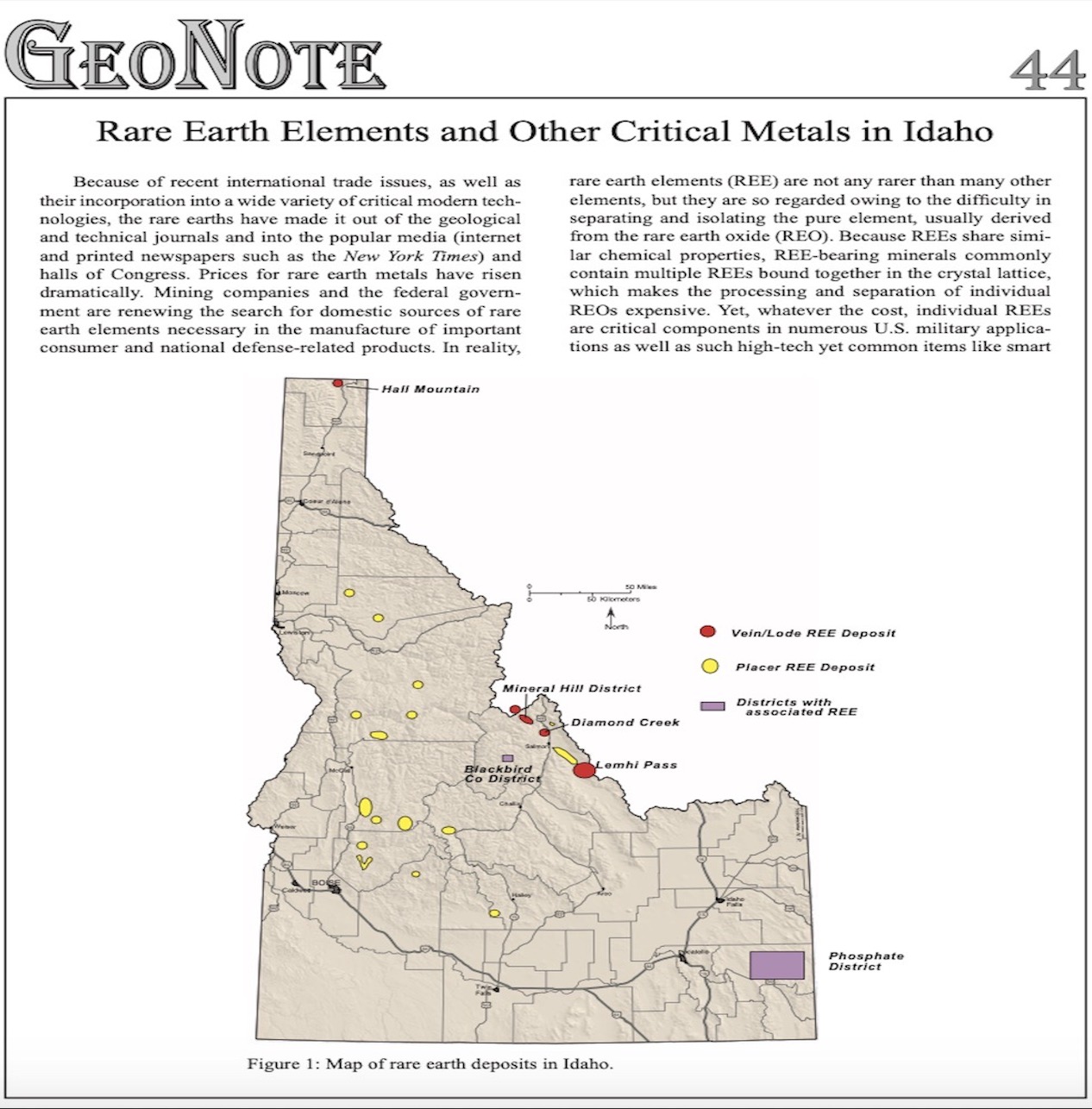
Rare-Earth Elements Overview
Decarbonization and Defensive Readiness
We believe that a number of long-standing domestic critical mineral production and supply-chain concerns have moved up in importance by at least a decade. It is well documented that the United States currently imports 90-100% of many critical minerals from countries such as China. As American citizens we are sensitive to the fact that the sources and prices of these strategic commodities are largely controlled by those who do not have our environment or national best interest in mind. Following the COVID-19 challenges and related supply shortfalls, we believe there will be a longer-lasting wave of realization with regard to domestic critical mineral sourcing and their associated supply-chains. The critical minerals “issue” is something members of the Idaho Strategic team have followed for decades, and we now feel that the timing is right to add these resources to our Idaho-based resource portfolio.
The reason for our entry into critical minerals, specifically rare earth elements, is two-fold. The first reason is because it is clear to us that a low-carbon future and its associated technologies are becoming an inevitable part of every country’s individual climate plans. Technologies such as electric vehicles, wind turbines, and some solar panels all share a common denominator… a reliance on rare earth elements, which, by default, means a reliance on China. Currently, China controls approximately 95% of the world’s rare earth element production, putting the world’s climate plans, such as President Biden’s plan to have 50% of new cars sold in the U.S. be electric vehicles by 2030, nearly 100% reliant on China’s personal rare earth element production and pricing agenda1. To put it into perspective, OPEC controls roughly 41% of global oil production and they are able to significantly influence the barrel price. Meanwhile, China controls 95% of global rare earth element production giving them near total control over the supply and price of minerals critical to electric vehicles and our world’s low-carbon future2. (more…)
.



